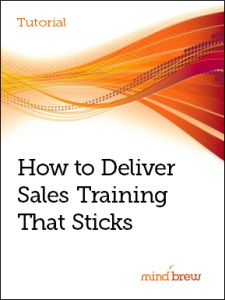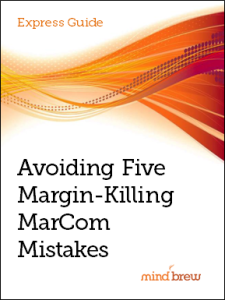At your organization, is marketing a cost center or a revenue center?
Traditionally, B2B companies have viewed marketing as a source of expenses. This makes sense because advertising, trade shows, sponsorships and related items cost a lot of money, and in the past organizations had no reliable way to track how these items impacted sales.
But today, the discipline of revenue marketing is turning this model upside down. Thanks to new marketing automation tools, marketers can track every lead they generate and follow those leads through the funnel until they become sales.
When this new technology is combined with the right strategies and processes, marketing can contribute significantly to the bottom line. It becomes a source of revenue rather than a source of expenses. And that can significantly improve marketing’s stature within the organization.
In a recent DemandBrew interview Debbie Qaquish, Chief Strategy Officer for the Pedowitz Group and author of Rise of the Revenue Marketer, said that she works with several organizations where “upwards of 60 to 65 percent of the pipeline and the closed revenue comes from marketing-qualified leads.”
If your marketing team can’t claim responsibility for more than 60 percent of closed sales, you really need to start investigating revenue marketing.
Qaquish was quick to point out that while automation tools make revenue marketing possible, simply purchasing the right technology is not enough to succeed in this new discipline. You need the right “strategy, people, process, technology, a focus on the customer, and of course, a focus on results.” Qaquish said, “When you bring all those things together, that’s really what enables a revenue marketer to be successful.”
This strategy requires a different mindset—and some organizational changes. According to Qaquish, “If you’re serious about transforming marketing from being a cost center to a revenue center, you have to take a look at the organizational structure. If you don’t, you will not be successful.”
Some of those changes involve making marketing responsible for hitting certain sales and revenue targets. That type of accountability is frightening to a lot of people, particularly those who’ve always worked for organization where marketing’s chief job was to “make things pretty.” Qaquish said that the transition to revenue marketing was sometimes too much for these people, and sometimes CMOs who are serious about the transition find it necessary to let some of those people go.
Qaquish recommends setting up something she calls a “Revenue Marketing Center of Excellence.” It’s a different way to structure marketing. A center of excellence is heavily dependent on relationships with sales and other groups and completely focused on bottom line results.
If you’re curious about revenue marketing or looking for advice on how to make this transition at your firm, check out the interview at the link below.







